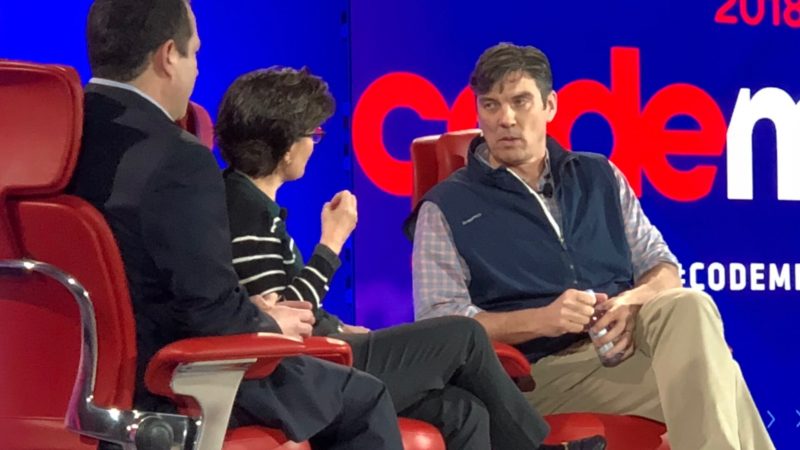Oath’s Tim Armstrong casts doubt over Go90’s future
"The [Go90] brand will remain, I don’t know how long for, but for now, it’s remaining,” Armstrong said on Tuesday.

Oath CEO Tim Armstrong (right)
Verizon’s two-year-old mobile video service Go90 is probably going bye-bye.
Go90’s future has been increasingly clouded since Verizon acquired Yahoo in 2016 and merged the portal with AOL into a new division called Oath in 2017. Following that roll-up, Verizon began to take the content that had only been distributed on Go90 and distribute it through Oath’s various outlets. It also reportedly cut back on buying original content for Go90, spurring questions of whether Oath was stripping Go90 for its parts, er, programming.
Those questions followed Oath CEO Tim Armstrong to Huntington Beach, California, on Tuesday, when he took the stage at Recode’s Code Media conference and was asked whether Oath will shutter the Go90 brand as it distributes its content elsewhere and dilutes its value as a standalone distribution outlet.
“The [Go90] brand will remain, I don’t know how long for, but for now, it’s remaining,” Armstrong said.
Not exactly a vote of confidence. But the statement isn’t necessarily a death knell, either. However, when taken in context with Armstrong’s other remarks regarding Go90 made onstage on Tuesday, the writing appears to be on the wall, if not yet on Go90’s tombstone.
When Verizon debuted Go90 in September 2015, the company’s goal was to create a standalone video platform a la Netflix or Hulu or YouTube. At the time, Armstrong, who had recently joined Verizon through its acquisition of AOL, was somewhat wary of its prospects given the difficulty of standing up a new platform from scratch. He told Verizon executives that it was “highly likely [the company would] stub its toe a huge amount of times on the pathway” to making Go90 a success, Armstrong said.
Where Oath kept stubbing its toe was on Go90 as a distribution outlet. While it had hoped to attract a large audience to the platform, it had platforms like AOL and Yahoo that already had large audiences. So Verizon shifted its strategy with Go90 after folding it into Oath last year.
“Go90 will be redistributed inside of the super-large distribution that we have [within Oath through AOL and Yahoo],” Armstrong said, describing Go90 as “a content engine, a content library.”
But if Go90’s role is now the content library for Oath’s other distribution outlets but is reportedly not acquiring new content, how long until Go90’s content blurs into simply being Oath’s content and Go90 fades out of the picture entirely? Armstrong didn’t say, but maybe he didn’t need to.
Opinions expressed in this article are those of the guest author and not necessarily MarTech. Staff authors are listed here.
Related stories
New on MarTech